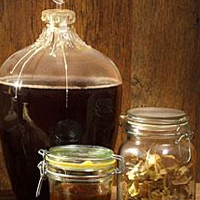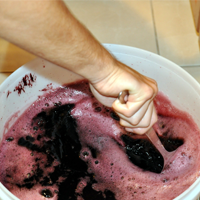Guide to Temperature Storage of Wine

After your wine has been bottled you will need to take careful steps to ensure that careful temperatures are maintained in order for the wine to remain stable. In most cases, it is best to store your wine in cool temperatures. For long-term storage, most bottled wines do better when stored at a temperature of about 55 degrees Fahrenheit. The reason why it is so important to store wine at cool temperatures is because cool temperatures help to reduce the effects of oxidation.
Keep in mind; however, that you do not necessarily need to obsess if you absolutely cannot obtain a storage facility at exactly 55 degrees. The improvement provided for each degree in temperature you are able to reduce in the storage area is really only marginal. Of course, a dark area that has a temperature of 65 degrees is always going to better than an area with a lot of light that has an average temperature of 75 degrees. Being able to store your wine in an area at 55 degrees; however, would only be slightly better than the 65 degree storage area.
The most important key is to try to avoid fluctuations in temperature in the area where you store your bottled wine, even if this means that area is slightly warmer than 55 degrees. Changes in temperature can be very difficult on bottled wine. Over time, temperature fluctuations will wear down your wine. Wine that is stored in an area with temperature fluctuations will take on a weak aroma and may begin to lose its character. The main reason that temperature changes have such an effect on bottled wine is due to the expansion and contraction that occurs.
When temperatures change, anything in that area naturally expands and contracts. With bottled wine, the glass in the bottle will expand and contract; however, the wine inside the bottle will also expand and contract. They do not expand and contract at the same level; however. Wine tends to expand and contract at a far greater level than the glass in the wine bottle. The result is the buildup of pressure inside the bottle. The aroma of the wine may then seep through the cork. In addition, the expansion and contraction process can result in carbon dioxide seeping into the wine through the cork and the vacuum that is left in the process. This can result in a very bad taste in your wine.
In some cases, you may not be certain whether the temperature in your storage area is stable. In that case, it is a good idea to set up a monitoring system to make sure that the temperatures are remaining stable. It is not uncommon for an area that was thought to be quite stable to have temperature fluctuations.
In some cases, these fluctuations can amount to as much as 10 degrees each day. Over time, this can prove to be disastrous for your wine. Therefore, if you are not entirely certain that your storage area is consistent in terms of temperature it really is a good idea to monitor it over a period of time to make sure that the temperature is remaining consistent. Keep in mind that when monitoring your storage area, you should check the temperature at least twice a day at different times in order to get an accurate idea of whether the temperature is remaining stable on a daily basis.



